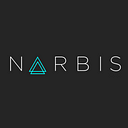
Despite a huge amount of research showing the benefits of neurofeedback to treat myriad disorders — including ADHD, depression, anxiety, and PTSD — the field has been held back because of a deceptively pedestrian problem: goop.
Paste and gel has been the standard way to keep electrodes in place and until recently, no one had been able to figure out how to develop technology that didn’t require pasting electrodes directly to the scalp.
So, for the past 50 years, because of the complexity (and mess) involved, clinicians administering neurofeedback (electroencephalography, or EEG-based biofeedback) to patients could only use the technology in a medical setting. They had to prepare a patient using paste and gel to make sure electrodes stayed in place on the scalp, and then had to hook up the electrodes to a screen to observe the patient’s brain patterns.
For instance, a child who has been diagnosed with an attention disorder might spend a clinical neurofeedback session learning to focus by controlling figures on a screen using nothing but their brainwaves. Impressive, definitely. But also time-consuming. Once you consider the travel time and waiting involved, a single neurofeedback session could take up to three to six hours.
Thanks to the recent invention of dry electrodes, however, people can now undergo neurofeedback treatment outside of a clinical setting. With dry electrodes, there’s no goop needed, zero preparation required, and users can initiate a neurofeedback session on their own — all in the comfort of their home and on their own time.

Dry electrodes were invented and developed by Devon Greco, CEO of Narbis, and are a patented hallmark of Narbis’ neurofeedback smart glasses. Greco began developing dry electrode technology in 2014 after scientists at UCSD had developed a dry electrode system for active electrodes for use in research. After reviewing the literature and technology, he was convinced that with some modifications, he would be able to create a system that would eliminate the need for EEG goop.
Greco worked closely with engineers, using a special Texas Instrument amplifier with components that achieved AC coupling. This milestone in turn allowed for measuring EEGs without paste and gels, while increasing the resolution of EEG measurements. The first version took a year to produce; the second took another year; and finally, after nearly three years, they developed the final, working version included in Narbis’ patent portfolio, including a NASA patent that powers the Narbis app’s algorithm.

“We spent a lot of time developing proprietary sensor technology for Narbis because we realized that the challenge of messy paste and gel associated with EEGs has been largely responsible for holding back the entire field of neurofeedback,” says Greco. “Now, with this advancement in the technology, anyone can benefit from neurofeedback, not just those with the luxury of having access to clinicians.”
Neurofeedback, a form of biofeedback, has long been lauded as a non-invasive, non-drug way to change the way your brain functions. By monitoring your brainwave activity using EEG electrodes, neurofeedback displays how your unique brain works, and by rewarding healthy brainwave activity over unhealthy activity, reduces unwanted symptoms and behaviors.
For example, Narbis smart glasses, which are attached to electrodes that rest on your head, recognize when you are distracted. The system tracks your brain’s state — whether you’re distracted, relaxed, or focused. When you start to lose attention, the glasses change tint. When you focus, they clear.
Beyond eliminating the need for goop, the dry electrodes on Narbis smart glasses have another benefit: They allow for multitasking while undergoing neurofeedback treatment. Rather than having to be hooked up to a machine while sitting in an office, Narbis smart glasses give you the flexibility to train your brain while doing the very tasks that require attention in the first place. Doing homework? Narbis glasses help you focus on the work in the moment, while also teaching your brain how to have better focus over the long term.

In other words, Narbis provides neurofeedback therapy that weaves into your life seamlessly. Since it’s worn while the user is performing routine tasks, it doesn’t add another daily task to the already busy schedules of children or adults. Akin to reading while jogging on a treadmill, you get the benefit of both tasks at the same time.
Moreover, it’s not a standalone therapy session. Narbis creates long-lasting physiological changes in your brain to improve its functioning and provides instant feedback to help stimulate neural systems to help cognitive function. In this way, Narbis is markedly different from other non-medication treatments like video games. Narbis also has a lower usage time: It only has to be used two to three times a week to be effective, as opposed to every day.
“Narbis is part of a new, disruptive category of medicine: digital therapy,” says Narbis CEO, Devon Greco. “When clinicians evaluate Narbis and look at the benefit the dry electrodes give them, it’s a very attractive alternative.”
Originally published at https://narbis.com on July 3, 2020.





